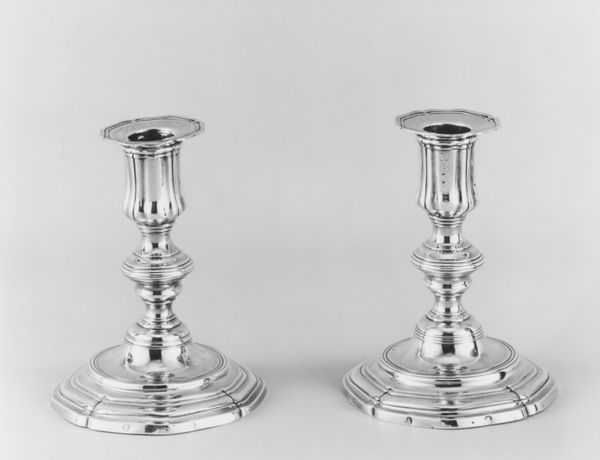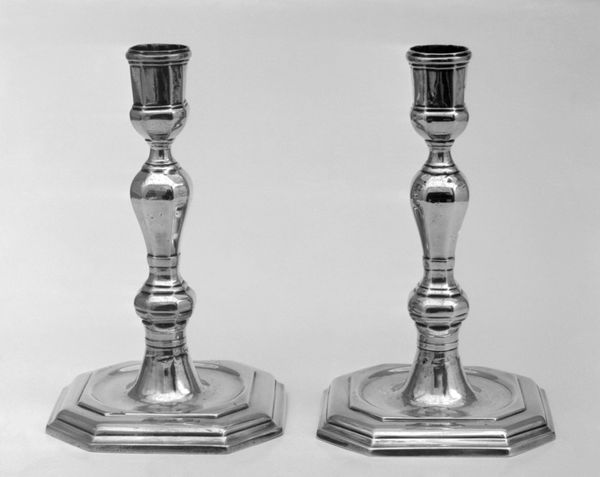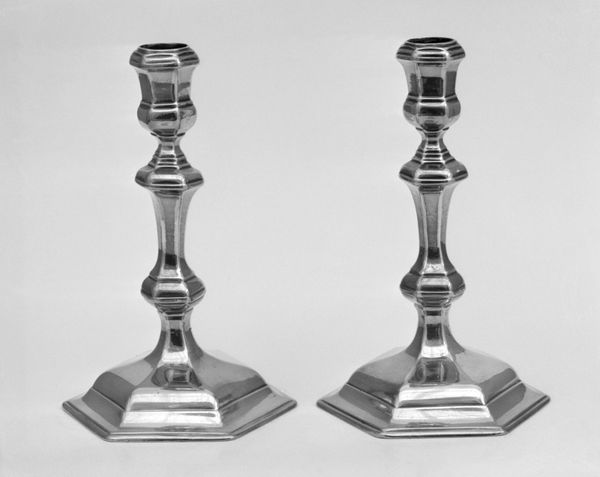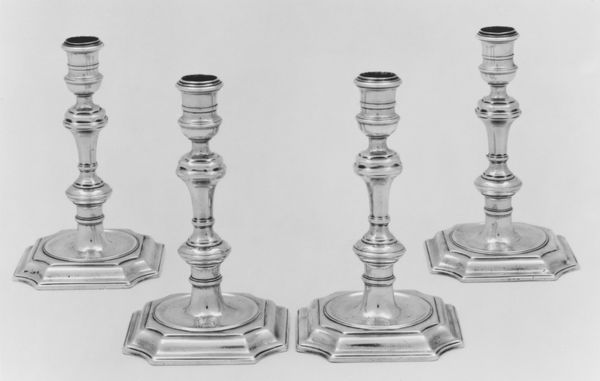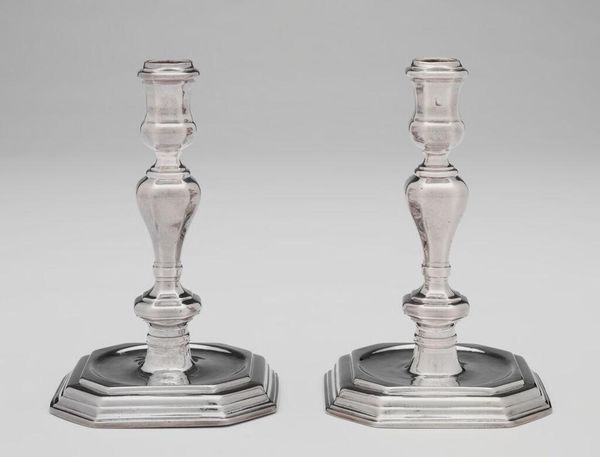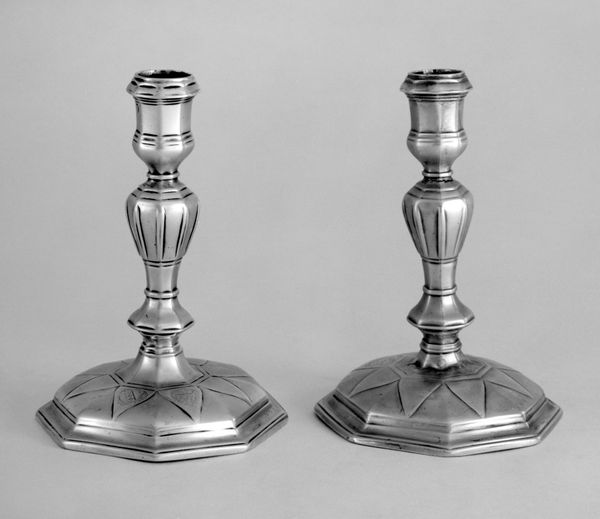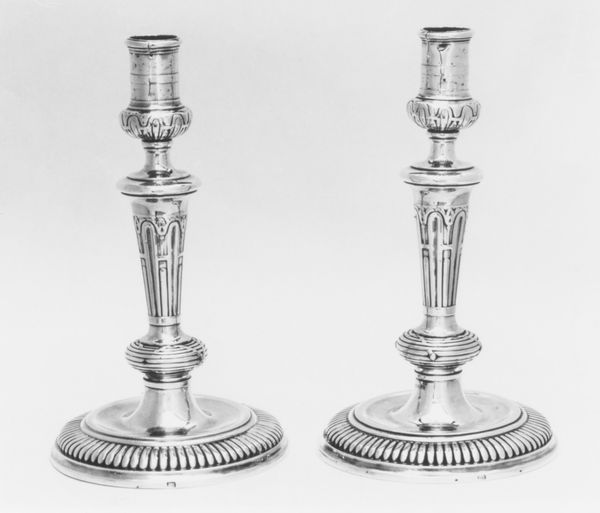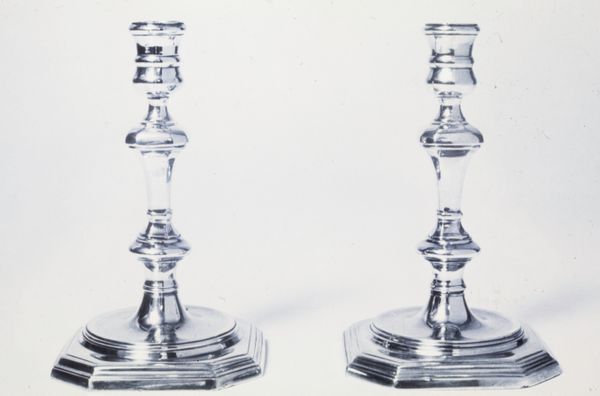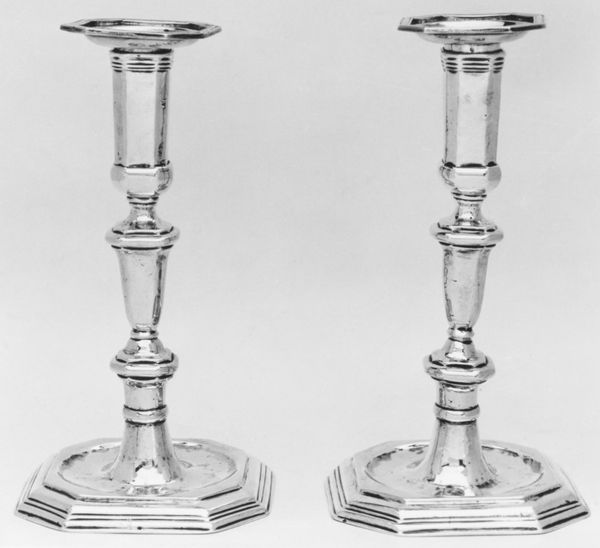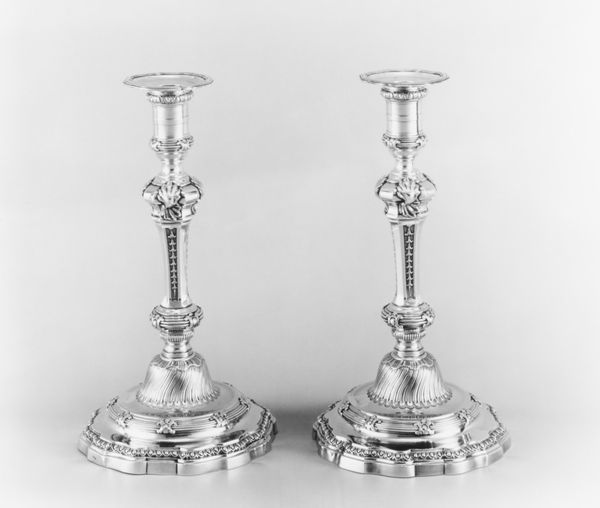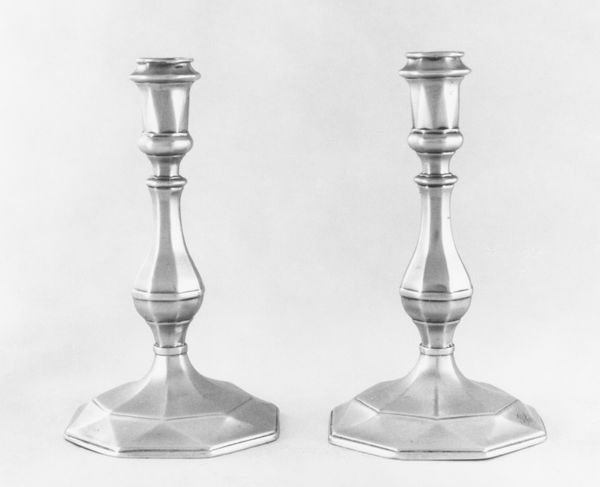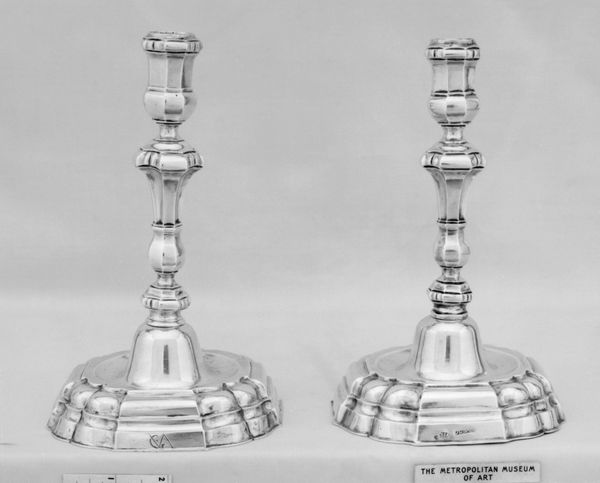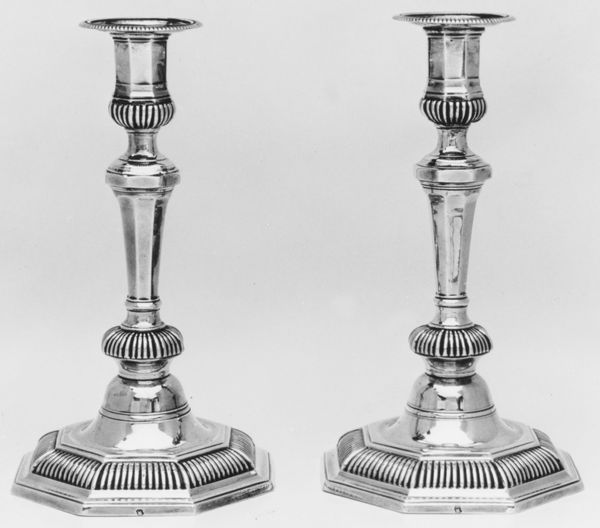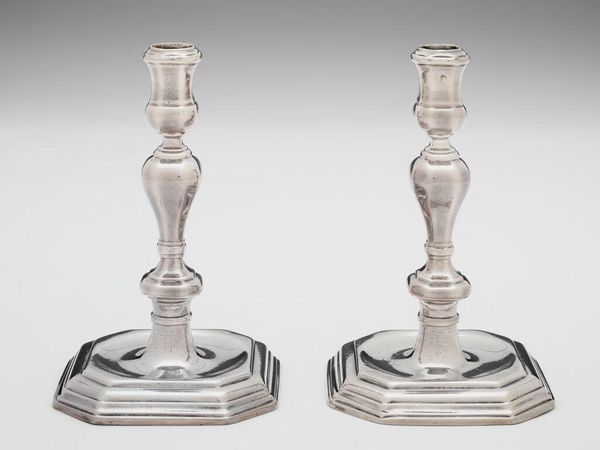
silver, sculpture
#
silver
#
baroque
#
sculpture
#
sculpture
#
decorative-art
Dimensions: Height (each): 3 1/2 in. (8.9 cm)
Copyright: Public Domain
Editor: This is a pair of dressing table candlesticks crafted in silver by Joseph Bird, dating back to 1705-1706. They strike me as incredibly formal, yet also quite delicate, with those almost floral curves along the stem contrasting the harsh lines on the base. What's your perspective on these? Curator: What I see here, beyond just decorative objects, are reflections of power and gender during the early 18th century. Think about who owned these, likely an upper-class woman, and what a "dressing table" represented: a space of beautification, where performances of femininity were literally constructed. How does understanding that inform how we view these candlesticks? Editor: I guess I never thought of the dressing table as a 'performance space' before, but that makes so much sense. So the candlesticks aren't just functional, they’re also symbolic of a constructed identity? Curator: Exactly. Silver, at the time, signaled wealth and status, reinforcing a social hierarchy. And consider how the candlelight would have illuminated the face, enabling a particular presentation of self. The baroque style, with its curves, reinforces a specific vision of ideal femininity during the period, perhaps obscuring the woman's own views. How does that Baroque aesthetic influence this construction of feminine identity, do you think? Editor: Wow, that’s fascinating. I’m now thinking about how restrictive that idea of femininity must have been and how these candlesticks played a small, but maybe significant role in perpetuating those ideals. I came in thinking "pretty silver," and now I’m considering issues of class, gender and social control. Curator: And that's the point! Ordinary objects can unveil extraordinary stories about our past and its influence on our present.
Comments
No comments
Be the first to comment and join the conversation on the ultimate creative platform.
